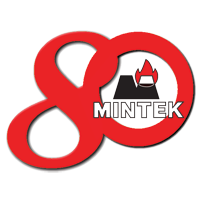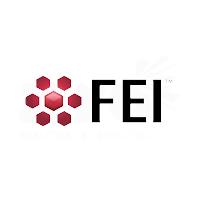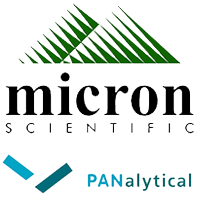Theme: Environmental Mineralogy/Geochemistry- Biomineralogy- Health
Applied Geochemistry and Geomicrobiology for the remediation of inorganic pollutants: from the nano to the meter scale
Convenors: Prof. Manuel A. Caraballo; Prof. Esta van Heerden; Dr. Harish Veeramani; Dr. Julio Castillo
Description:
Water, soil and sediments pollution with inorganic compounds spans an enormous range of systems and has serious environmental ramifications ranging among others: metal pollution and acidity at mine districts, groundwater contamination with various metals (e.g., arsenic, mercury, uranium,…) and anions (e.g., sulfate and phosphate induced eutrophication), and the dispersion of radioactive elements in the environment. Unraveling various geochemical, mineralogical and microbiological processes that control the release and removal of inorganic pollutants in those environments is essential not only to understand these systems but also to design and implement efficient remediation strategies. The current session aims to cover the microbiological, mineralogical and geochemical processes involved in the natural attenuation of inorganic pollutants in aquatic and soil systems as well as the implementation of engineered systems to remediate such polluted environments. Research addressing the use of passive and active treatment systems, inorganic nanoparticles, engineered or natural microorganisms and their secondary mineral products for the remediation of aqueous and soil polluted environments are particularly invited to this session.
CO2 Storage: Mineralogical Implications
Convenors: Dr Jordi Cama (IDAEA, CSIC); Ms. Linda Luquot; Mr. Sebastian Fischer
Description:
Geological sequestration of CO2 is internationally considered as a potential means of contributing to the planned reduction in anthropogenic emissions. Current projects include both laboratory and field experiments. Injecting CO2 at depth involves the acidification of groundwater and the possible dissolution and precipitation of minerals in the reservoir and seal formations. Porosities and key flow and transport properties (permeability, diffusivity) may change as a consequence of these reactions.
The focus of this session will be to present (1) experimental work, (2) modelling studies and/or (3) a combination of both applied to the understanding and quantification of mineral reactions in the context of CO2 sequestration, together with the impact of these changes on fluid flow and solute transport.
Keynote Presenter: Muriel Andreani
Keynote Presentation: CO2 geological storage in utramafic reservoirs: Mineralogical changes
Environmental Mineralogy and Geochemistry of Mine Waste
Convenors: Prof. Juraj Majzlan; Ms. Karen Hudson-Edwards; Prof. Dogan Paktunc
Description:
Controlling mine drainage and metal(loid) leaching from mine wastes is probably the most important environmental issue facing the mining industry. Over the past two decades, significant progress has been made in the prediction and prevention of acid mine drainage but gaps remain in our understanding of the fundamentals of the processes leading to metal(loid) leaching and the stability of the source minerals and secondary compounds in mine wastes. From a practical point of view, it would be highly desirable to make the mine wastes geochemically stable requiring minimum post-closure management. With this ultimate objective in mind, the session aims to cover progress on the mineralogical and biogeochemical aspects of (1) generation of mine drainage and associated metal(loid) leaching under different disposal conditions, (2) coupled models for predicting acid generation and metal(loid) leaching and mobility, (3) modelling capability to predict the onset of mine drainage, transport of contaminants and their fate in the engineered systems, and (4) the use of innovative (bio)technologies to remediate the existing and prevent the future contamination from mine waste.
Environmental mineralogy and the carbon cycle
Convenors: Dr. Ben Gilbert LBNL; Dr. Glenn Waychunas
Description:
We welcome field studies that reveal the mechanisms and extent of mineral effects on Interactions between minerals and organic carbon in the environment can exert a major effect on biogeochemical processes including many aspects of the carbon cycle. For example, there is gathering evidence that such interactions stabilize organic materials (OM) in deep soil horizons, reduce the rate of OM oxidation, and affect OM aggregation behavior and dispersal. Knowledge from the molecular-scale to colloid scale and larger is likely necessary to understand these observations, and thereby potentially enable improvements in environmental carbon stabilization. We seek contributions that address all aspects of organic-mineral interactions, including mineral precipitation and growth, molecular adsorption to mineral interfaces, and abiotic and biological carbon degradation. carbon cycling such as the coupled evolution of mineralogical and OM contents of soils, or mineral colloid controls on OM transport. We further encourage laboratory and computational studies on fundamental aspects of mineralogical controls on organic processes.
Keynote Presenter: Dr. James DeYoreo
Keynote Presentation: Effect of organic molecules on calcite nucleation and growth
Inorganic Fibres, Biosphere, and Assessment
Convenors: Prof. Elena Belluso; Prof. Gualtieri Alessandro; Prof. Gunter Mickey; Prof. Rinaudo Caterina
Description:
The purpose of this session is to explore the characterization, diffusion and toxicology of a variety of inorganic fibers of both natural - asbestos and non asbestos classified - and synthetic, e.g. man made ceramic and titanium dioxide fibers, natural in origin vs anthropogenic environment and their interaction with humans and animals. This interdisciplinary topic attracts scientists from several fields and especially geosciences - geochemistry, mineralogy, petrology, material science, chemistry, biology, physics, medical sciences and others. Besides the determination of the risk assessment and possible health hazard, a thorough discussion on this topic may be of benefit to prompt decisions of social and political relevance and plan international intervention actions as far as the environmental health protection is concerned.
Medical Mineralogy: With Particular Focus on Developing Countries
Convenors: Prof. Theophilus Davies - IMGA South Africa Chapter; Prof. Benjamin Mapani; Prof. H. Mouri
Description:
The causal links between geomaterials and specific diseases in humans have long been recognised, but to date, there are still aspects of these links that remain unclear. The minimum exposure levels needed to trigger disease, the influence of genetic factors, and the exact mechanisms of toxicity, have all been the focus of considerable research over the last decade or so. This research, thankfully, is buoyed by recent developments in analytical techniques (such as spectroscopy, molecular modelling and high resolution imaging); and new avenues are being opened for investigating the interaction between minerals and the human body at scales that are well beyond those accessible to geomedical researchers just 20 years ago. However, while new techniques may enable advancement in Medical Mineralogy research to be made, real progress would only be truly realised when scientists in the fields of biomineralogy, biomedicine, geochemistry and public health collaborate and harness the expertise in these clearly related disciplines. Many of the examples in Medical Mineralogy research presented in similar meetings in the past have been from study populations in developed regions of the world, where, ironically, human interactions with geomaterials are far less common than in Africa and other developing regions. However, over the last few years, much more of this research has been directed towards populations in developing countries, with particular reference to silica-induced diseases in mining and agriculture. This "Session" intends to display these areas of active and fruitful research as keenly as possible through oral and poster presentations.
Minerals and Microbes
Convenors: Prof Anhuai Lu; Prof. Hailiang Dong
Description:
This Session will explore the interactions between minerals and microbes. The study of mineral-microbe interactions is one of the main fields of environmental mineralogy, as minerals are the most fundamental earth materials with which microbes interact at all scales. Minerals provide microbes with nutrients and living habitats, and microbes impact rock and mineral weathering and diagenesis rates through their effects on mineral solubility and speciation. However, to understand the complex relationships between minerals and microbes the collaboration of professionals in the fields of both mineralogy and biology is essential and this topic seeks presentations from people working in both fields. Presentations addressing microbial dissolution, precipitation, transformations of minerals, as well as integration of mineral and microbe, and other related topics are invited.
Keynote Presenter: Prof. Hailiang Dong
Mineral Weathering and Low T Surface Processes
Convenor: Prof. Christian Mavris
Description:
Rock weathering occurs due to physical and geochemical processes, which tend to alter the equilibria of minerals. These changes are promoted by a broad range of factors, such as climate, water availability, bacterial activity, but also denudation and frictional surface phenomena. Consequently, the landscape is modelled and constantly, evolving. Furthermore, minerals are a remarkable pool of nutrients available for plant growth, thus representing the key to decode the transition from abiotic to biotic environment. This session aims to gather projects related to the field of mineral weathering on the Earth's surface, ranging from geomorphology and landscape modelling to pedogenesis, at any possible evolutionary stage.
Mineralogy on Radioactive Waste Disposal, Decontamination of Radioactively Contaminated Site and Decommissioning of Nuclear Power Plants
Convenors: Prof. Tsutomu Sato (Commission: WGEMG), Prof. Anhuai Lu; Dr. Jordi Cama
Description:
Mineralogy and mineral alteration on radioactive waste geological disposal, including natural analogue studies, have been discussed in the past IMA meeting. However, after the accident at Fukushima nuclear power plant and at the present of nuclear power plants at the end of their life will be shut down, mineralogical information and techniques are more urgent and important on not only radioactive waste disposal but also decontamination of radioactively contaminated site (zeolite, clay minerals, titanium oxidex, and etc.) and decommissioning of nuclear power plants. Especially, mineralogy is definitely important on how to treat the fuel debris and dispose safely. The focus of this session will be to present (1)sorption of radionuclies (2) fate of radionuclides in the disposal, decontamination, and decommission sites, (3) mineral behavior at these sites (4) modeling studies and/or (5) a combination of the above knowledge applied to the understanding and quantification of mineral reactions and phases for long term performance of minerals in these sites.
Keynote Speaker: Dr. Hirohisa Yamada
Keynote Presentation: Clay Mineralogical Approach for Decontamination of Radioactive Contaminants in Fukushima, Japan
The role of mineralogical sciences in the development of sustainable cement-based materials
Convenors: Prof. Gilberto Artioli; Dr. Andreas Luttge; Dr. Luca Valentini; Dr Joseph Biernacki
Description: Binders and cements are crucial materials in modern human activities. Advanced mineralogical techniques and computational models may provide important information for linking the molecular, microstructural, kinetic and thermodynamic information required to understand and control the behaviour of such materials during the hydration process, and their use in practical applications. Critical problems involved in the development of modern sustainable cementitious materials include the global generation of CO2 during mass production of Portland clinkers, the use of recycled materials, and the development of alternative, durable and environmentally-compatible cements. Some of the key themes are for example (a) the understanding of the hydration kinetics and microstructure development in conventional cement binders, (b) the nanostructural nature of the calcium silicate hydrates phase formed during hydration, (c) the crystal structure complexity of C-S-H and other cement-related minerals, (d) the role of secondary cementitious materials obtained from industrial and agricultural wastes in the production of blended cements; (e) the mechanisms of reaction and performance of alkali-activated cements (geopolymers).
Keynote Presenter: Prof. Jannie van Deventer
Keynote Presentation: Commercial implications of phase evolution in alkali activated concrete
General Session - Environmental Mineralogy / Geochemistry, Biomineralogy, Health
Convenors: Prof. Mihaly Posfai, Prof. Christian Mavris, Prof. Tsutomu Sato
Description:
This is a general session covering topics under the Environmental mineralogy/geochemistry, biomineralogy, health theme, for submission of abstracts that do not conform with other sessions under this theme.











